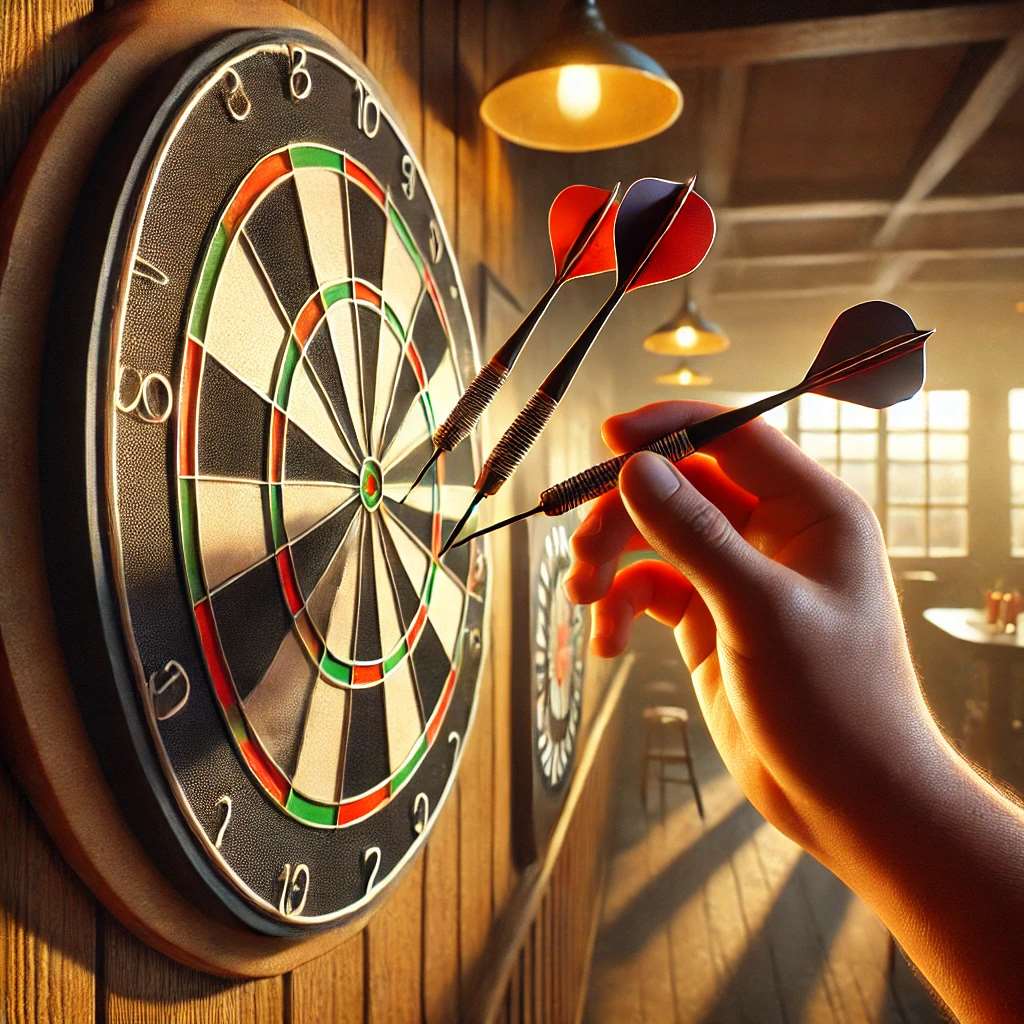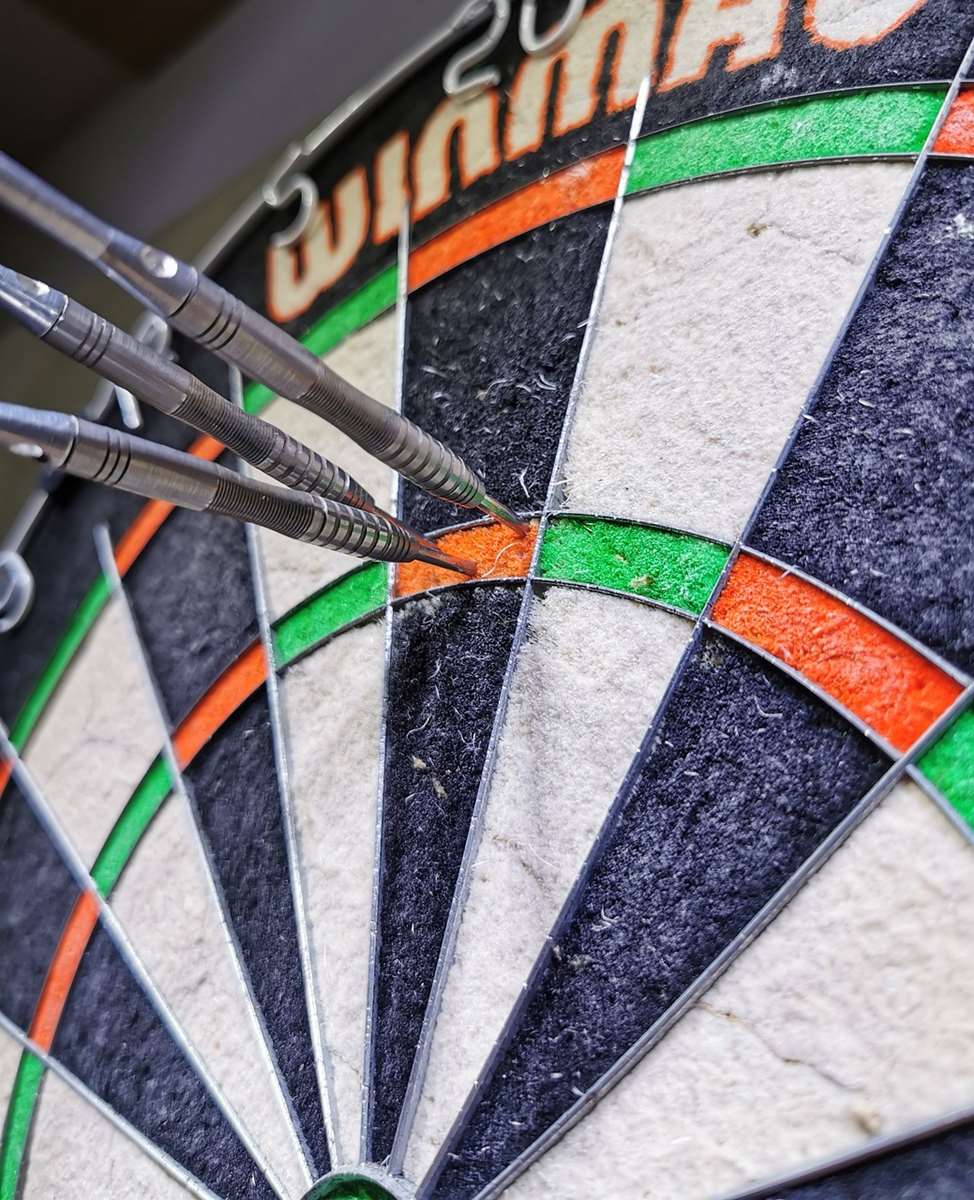Maintaining league standings handicap accurately ensures fairness and encourages participation across all skill levels. This article details how to effectively manage handicaps within your league, covering calculation methods, adjustment strategies, and best practices for a competitive and enjoyable experience. We’ll explore various handicapping systems and provide actionable tips for implementation.
⚠️ Still Using Pen & Paper (or a Chalkboard)?! ⚠️
Step into the future! The Dart Counter App handles all the scoring, suggests checkouts, and tracks your stats automatically. It's easier than you think!
Try the Smart Dart Counter App FREE!Ready for an upgrade? Click above!
Understanding League Handicaps and Why They Matter
Handicap systems in leagues, especially in games like darts, bowling, or golf, level the playing field by giving weaker players a statistical advantage. This allows them to compete more fairly against stronger opponents. Without handicaps, leagues often become dominated by a few top players, leading to decreased participation and overall enjoyment. A well-managed handicap system, conversely, fosters a more inclusive and competitive environment. This leads to higher engagement and a more vibrant league.
Handicaps should reflect a player’s actual ability, and the system should be transparent and easily understood by all members. Ambiguity and complexity can lead to distrust and dissatisfaction. Simple, clear rules are essential.
Benefits of Using Handicap Systems
- Increased Participation: More players feel they have a chance to win.
- Improved Competition: Matches are closer and more exciting.
- Enhanced Social Interaction: Players of all skill levels can enjoy the game together.
- Greater Player Retention: Players are more likely to stay in the league if they feel they can compete.
Furthermore, a properly implemented handicap system can incentivize players to improve their skills. Knowing that their handicap will adjust as they get better can be a strong motivator.

Different Methods for Calculating Handicaps
There are several methods for calculating handicaps, each with its own advantages and disadvantages. The choice of method often depends on the specific game and the preferences of the league organizers. Some popular methods include:
- Percentage-Based Handicaps: This is one of the most common methods. It involves taking a percentage of the difference between a player’s average score and a target score (e.g., 80% of the difference between the average and 100 in bowling).
- Fixed Point Handicaps: This method assigns a fixed number of points to players based on their skill level. This is less dynamic but simpler to manage.
- Regression-Based Handicaps: This more complex method uses statistical regression to predict a player’s performance based on past results. It can be more accurate but requires more data and expertise.
- Winning Percentage Handicaps: This involves adjusting handicaps based on a player’s winning percentage. Players who win more often have their handicaps reduced.
When choosing a method, consider the ease of calculation, the accuracy of the handicap, and the transparency of the system. Simpler methods are easier to understand and implement, while more complex methods may provide a more accurate reflection of player skill.
Remember to clearly define the parameters of the chosen method. For example, if using a percentage-based system, specify the percentage used and the target score.
Key Considerations for Setting Initial Handicaps
Setting initial handicaps accurately is crucial for the success of any handicap system. An inaccurate initial handicap can lead to frustration and distrust among players. Here are some key considerations:
- Historical Data: If possible, use historical data from previous leagues or tournaments to determine initial handicaps.
- Placement Rounds: Conduct placement rounds where players compete against each other to establish a baseline performance.
- Self-Assessment: Allow players to self-assess their skill level, but be prepared to adjust their handicaps based on their actual performance.
- Expert Opinion: Consult with experienced players or league organizers to get their opinion on player skill levels.
It’s often helpful to err on the side of generosity when setting initial handicaps. It’s easier to adjust handicaps downwards if a player is performing too well than it is to adjust them upwards if they are performing too poorly.
Consider using a combination of methods to determine initial handicaps. For example, you could use historical data and placement rounds to get a preliminary handicap, and then adjust it based on self-assessment and expert opinion.

The Importance of Regularly Adjusting Handicaps
Handicaps are not static; they need to be adjusted regularly to reflect changes in a player’s skill level. Failure to do so can lead to an unfair system where some players are over-handicapped or under-handicapped. Here’s why regular adjustments are important:
- Skill Improvement: Players improve over time, so their handicaps need to be adjusted accordingly.
- Sandbagging Prevention: Regular adjustments discourage players from intentionally performing poorly to maintain a higher handicap (sandbagging).
- Maintaining Competition: Regular adjustments ensure that matches remain competitive and exciting.
There are several ways to adjust handicaps. The most common method is to adjust them based on a player’s performance in recent matches. For example, you could increase a player’s handicap if they consistently perform below their average, and decrease it if they consistently perform above their average. It’s useful to understand Basic Darts Fundamentals for Beginners to help players understand the game better.
Another method is to adjust handicaps based on a player’s winning percentage. Players who win more often have their handicaps reduced.
The frequency of adjustments depends on the length of the season and the rate at which players improve. A good rule of thumb is to adjust handicaps every few weeks or after a set number of matches.
Best Practices for Handicap Adjustments
- Consistent Application: Apply the adjustment rules consistently to all players.
- Transparent Rules: Clearly communicate the adjustment rules to all players.
- Data Tracking: Keep accurate records of player performance to facilitate adjustments.
- Fairness: Ensure that the adjustment rules are fair and equitable.
Addressing Common Challenges in Maintaining League Standings Handicap
Maintaining league standings handicap isn’t always smooth sailing. Several challenges can arise, including sandbagging, disputes over handicaps, and resistance to adjustments. Here’s how to address these common issues:
- Sandbagging: Implement measures to discourage sandbagging, such as penalizing players who intentionally perform poorly or implementing a minimum performance threshold.
- Disputes over Handicaps: Establish a clear and transparent appeals process for players who disagree with their handicaps. Have a committee or impartial third party review the appeals.
- Resistance to Adjustments: Communicate the reasons for the adjustments and emphasize the importance of fairness and competition. Solicit feedback from players and be willing to make adjustments to the adjustment rules if necessary.
Open communication and transparency are key to resolving these challenges. Players are more likely to accept handicap adjustments if they understand the reasoning behind them and believe that the system is fair.
Consider implementing a “sandbagging penalty” where players who consistently perform significantly below their handicap have their handicap adjusted more drastically.

Tools and Resources for Handicap Management
Several tools and resources can help league organizers manage handicaps more effectively. These include:
- Spreadsheet Software: Spreadsheet software like Microsoft Excel or Google Sheets can be used to track player performance and calculate handicaps.
- League Management Software: Dedicated league management software often includes built-in handicap calculation and adjustment features.
- Online Handicap Calculators: Several online handicap calculators are available that can simplify the calculation process.
- Handicap Committees: A handicap committee can be formed to oversee the handicap system and resolve disputes.
Choosing the right tools and resources depends on the size of the league and the complexity of the handicap system. For smaller leagues, spreadsheet software may be sufficient. For larger leagues, dedicated league management software may be a better option.
Invest time in learning how to use the chosen tools and resources effectively. Proper training can save time and reduce errors.
Legal and Ethical Considerations
While handicap systems are generally fair and ethical, it’s important to be aware of potential legal and ethical considerations. In some cases, handicap systems could be seen as discriminatory if they are not applied fairly and consistently. It is important to how to make darts fairer with handicap rules in order to maintain a good competitive environment.
Here are some guidelines to ensure that your handicap system is legal and ethical:
- Non-Discrimination: Ensure that the handicap system does not discriminate based on age, gender, race, religion, or any other protected characteristic.
- Transparency: Clearly communicate the rules of the handicap system to all players.
- Fairness: Apply the rules of the handicap system fairly and consistently to all players.
- Appeals Process: Provide a fair and transparent appeals process for players who disagree with their handicaps.
Consult with legal counsel if you have any concerns about the legality or ethicality of your handicap system.
Avoid making assumptions about player skill levels based on stereotypes or generalizations.

Future Trends in Handicap Systems
Handicap systems are constantly evolving as technology advances and new ideas emerge. Some future trends in handicap systems include:
- AI-Powered Handicaps: Artificial intelligence (AI) could be used to develop more accurate and dynamic handicap systems that adapt to individual player performance in real-time.
- Virtual Reality (VR) Handicaps: VR technology could be used to simulate real-world playing conditions and develop more realistic handicaps.
- Gamified Handicaps: Handicap systems could be gamified to make them more engaging and enjoyable for players.
These trends have the potential to revolutionize handicap systems and make them even fairer and more effective. As technology continues to evolve, expect to see even more innovative approaches to handicap management.
The Long-Term Impact of Well-Managed Handicaps
The effort you put into maintaining league standings handicap systems pays dividends. A well-managed handicap system has a significant long-term impact on the health and vitality of the league. It attracts and retains players, fosters a competitive and enjoyable environment, and promotes fair play. These benefits contribute to the overall success and longevity of the league.
Think of the handicap system as an investment in the future of the league. By creating a level playing field, you are ensuring that the league remains attractive to players of all skill levels for years to come. A solid understanding of Alternative darts rules for home play can offer more insight into handicapping strategies.
Don’t underestimate the power of a fair and well-managed handicap system. It can be the difference between a thriving league and a struggling one.

Maintaining League Standings Handicap: A Comprehensive Guide
This article has provided a comprehensive guide to maintaining league standings handicap. By understanding the principles of handicapping, choosing the right method, setting initial handicaps accurately, adjusting handicaps regularly, and addressing common challenges, you can create a fair and competitive league that attracts and retains players. It’s also good to examine modifying rules for mixed-level dart players to improve your dart league. Remember that transparency, communication, and fairness are key to success.
So, take action today to implement or improve your handicap system. By doing so, you’ll be investing in the future of your league and ensuring that it remains a vibrant and enjoyable community for all players. Start by assessing your current system, identifying areas for improvement, and implementing the tips and strategies outlined in this article. Good luck!
Evaluate your existing handicap system based on the criteria discussed in this article. Identify areas where improvements can be made and prioritize them. Consider soliciting feedback from players to get their perspective on the system.
Hi, I’m Dieter, and I created Dartcounter (Dartcounterapp.com). My motivation wasn’t being a darts expert – quite the opposite! When I first started playing, I loved the game but found keeping accurate scores and tracking stats difficult and distracting.
I figured I couldn’t be the only one struggling with this. So, I decided to build a solution: an easy-to-use application that everyone, no matter their experience level, could use to manage scoring effortlessly.
My goal for Dartcounter was simple: let the app handle the numbers – the scoring, the averages, the stats, even checkout suggestions – so players could focus purely on their throw and enjoying the game. It began as a way to solve my own beginner’s problem, and I’m thrilled it has grown into a helpful tool for the wider darts community.